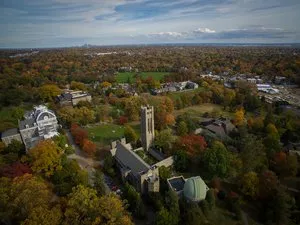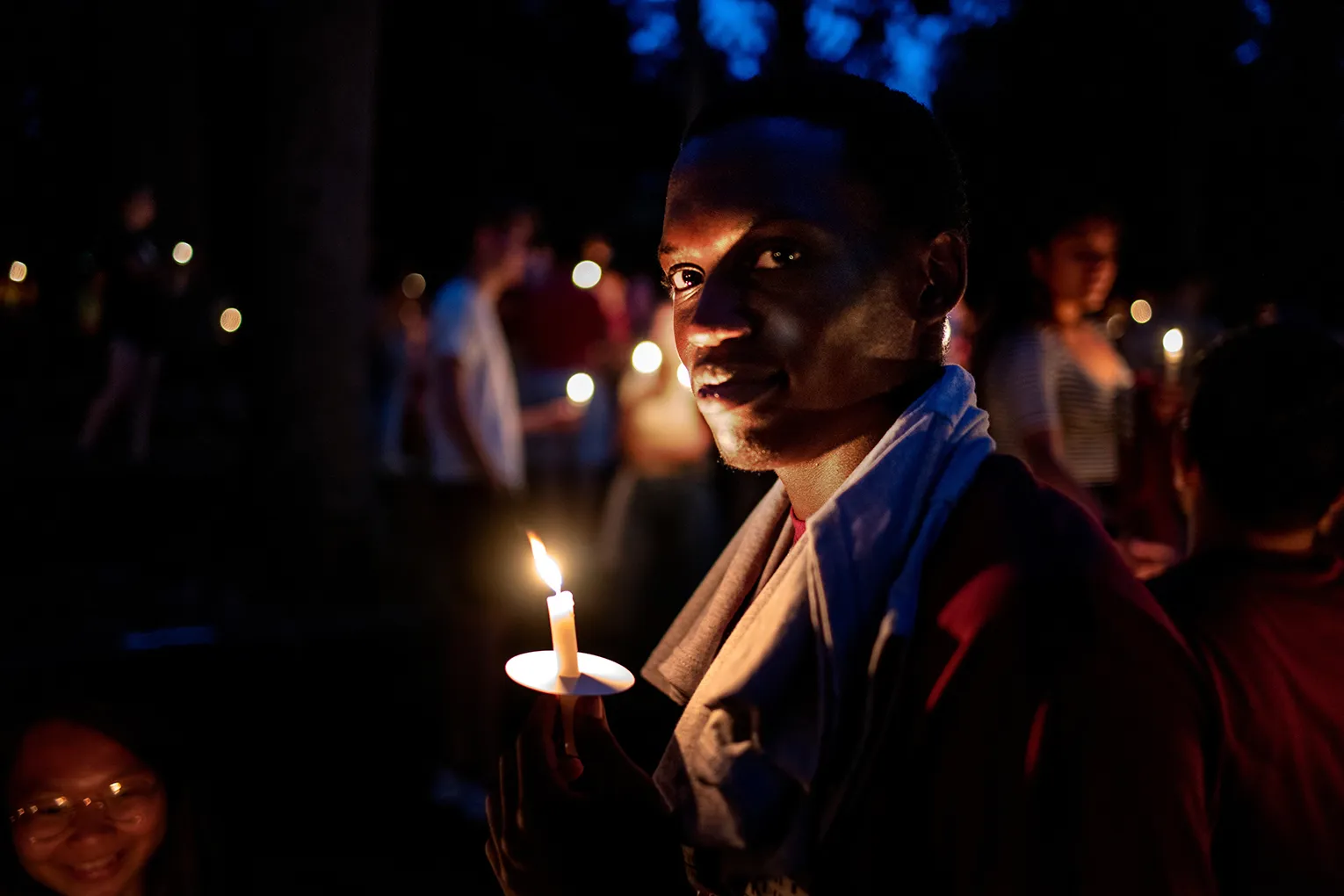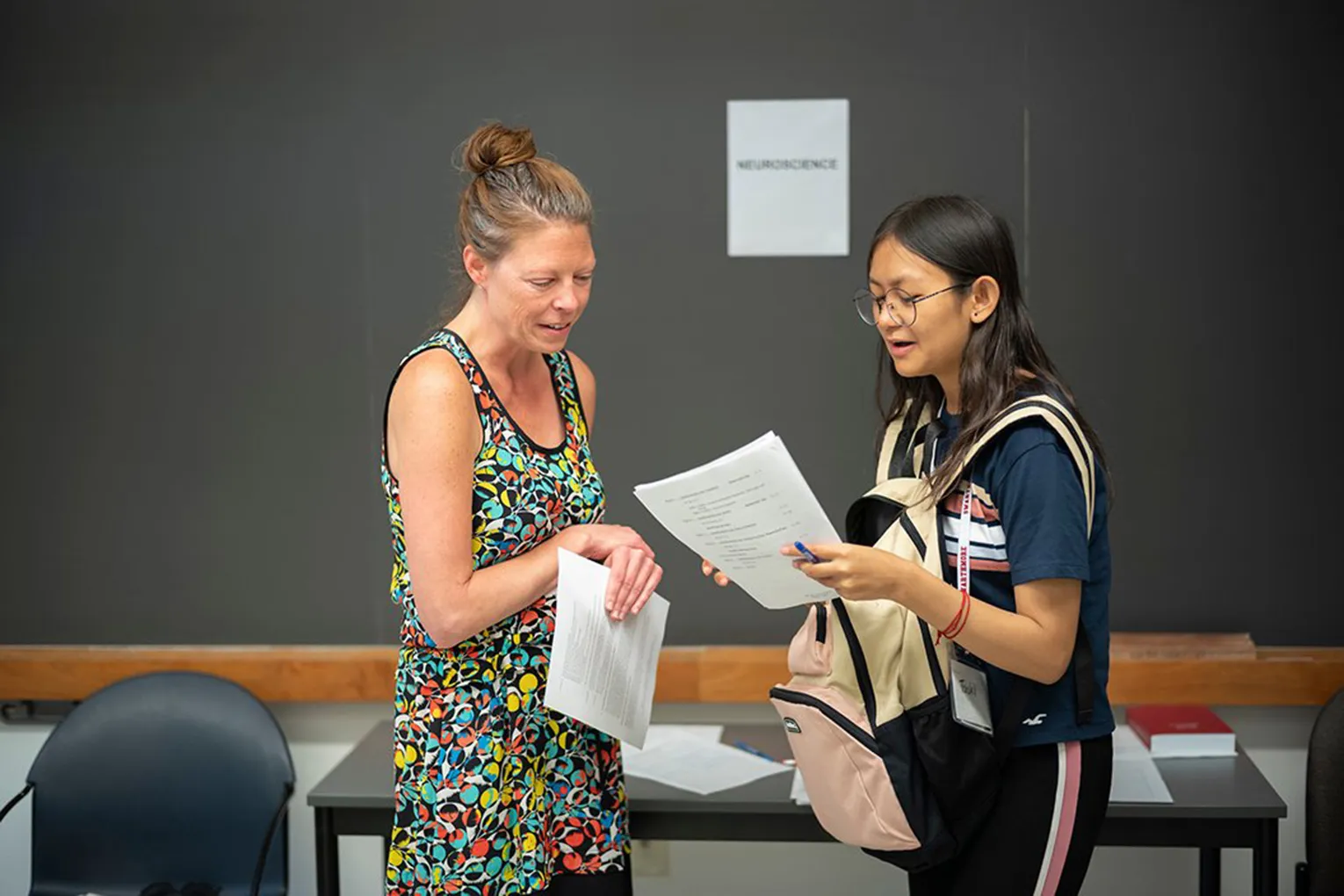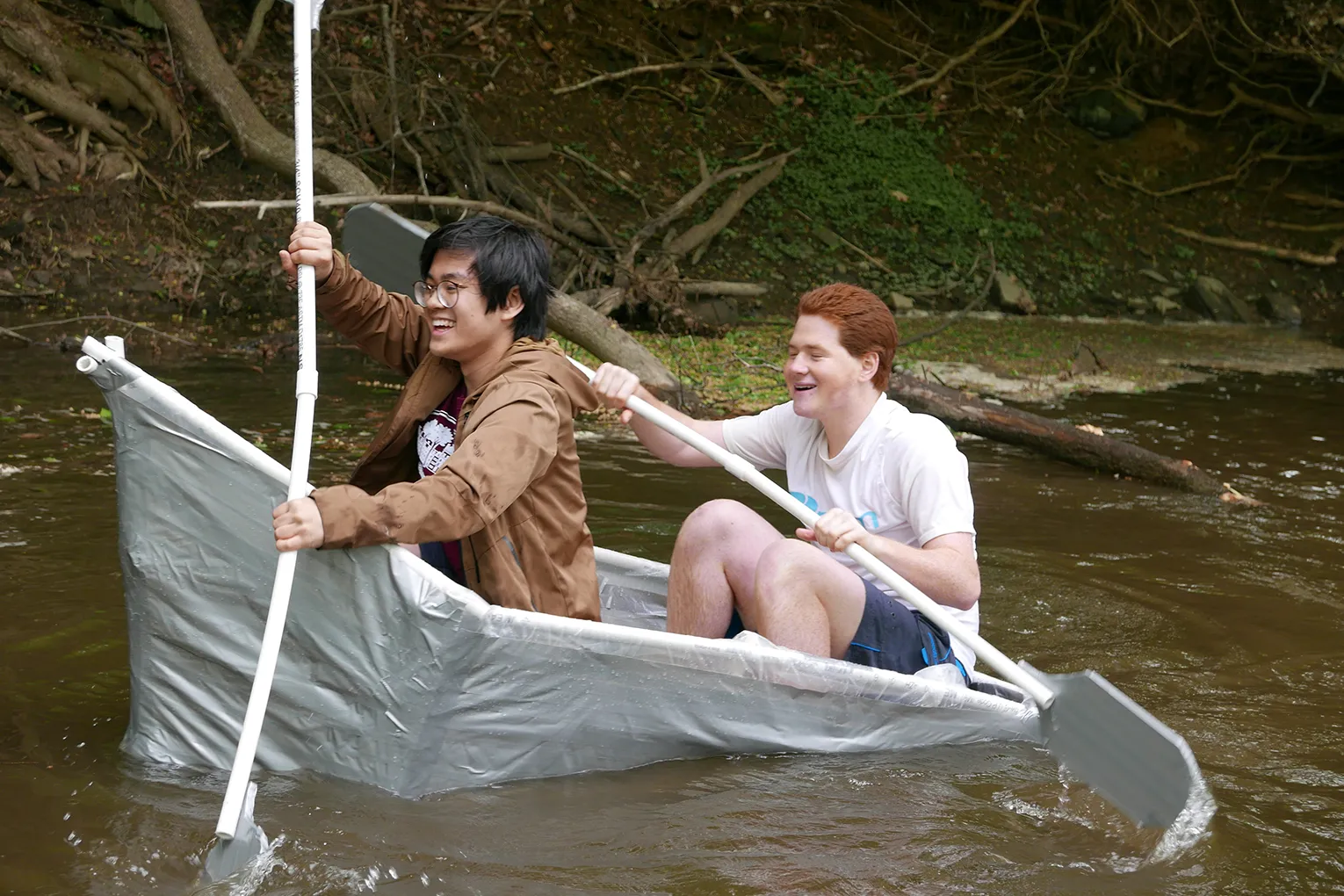In Honor of Language and Media Centers, MakerSpace Director Michael Jones
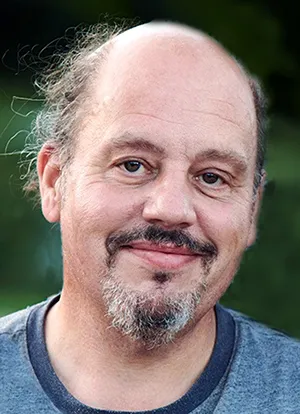
President Valerie Smith shared the following message with the campus community on May 12, 2025:
Dear Friends,
With deep sadness, I write to share the news that Michael Antoine Richard Jones, director of the Language and Media Centers and MakerSpace, died on Friday, May 2. He would have turned 60 later this month.
For nearly 30 years, Mike devoted himself to supporting students, faculty, and staff, not just in learning new languages but also in encouraging them to explore new ways to teach, design, and create across all academic interests and skill levels. He is remembered for his generosity, resourcefulness, and for using his many talents to help build and sustain our community.
Mike is survived by his mother, Hendrica “Henny” Van Gils Jones, brothers Rob (Suzanne) and Erik (Brent), nieces Breda and Jordan, and nephew Colin. A memorial service is planned for the first weekend of June in Philadelphia. Details will be shared when they are available.
In lieu of flowers, the family welcomes contributions in Mike’s name to causes that were deeply important to him: the American Civil Liberties Union, the Powelton Village Civic Association, the Kidney Cancer Association, and your local public radio station.
I invite you to read more below about Mike and his many lasting contributions to our community.
Sincerely,
Val Smith
President
In Honor of Language and Media Centers, MakerSpace Director Michael Jones
Language and Media Centers and MakerSpace Director Michael A. Jones died on Friday, May 2, at 59. With his passing, the Swarthmore community has lost a bold and innovative educator whose efforts embodied interdisciplinary collaboration.
“I knew Mike even before I came to Swarthmore, because he had a professional reputation in our circles in the academic technology community,” says Chief Information Technology Officer Jason Parkhill. “When I think of him, I think ‘force of nature.’ He had an ever-active mind and curiosity that always made it seem he was continuously evaluating every situation and conversation on multiple levels and from multiple perspectives.”
“What an amazing collaborator Mike has been,” says Associate Professor of French and Executive Director of Global Engagement Carina Yervasi. “He never hierarchized or made distinctions between different faculty or visitors. He would find ways to make our teaching vision a technological reality.”
“Mike selflessly took on the gritty work in order to get things moving forward,” says Associate Professor of Art Logan Grider. “I miss Mike and will hold close all memories of him: his excellent sense of humor, his wry smile, and that particular brand of stubbornness that quite simply got things done.”
Jones was born in Germany to a Dutch mother and an American father who worked as a civilian for the U.S. Army, overseeing craft and auto hobby shops. During his early years, the family moved frequently between Germany and Belgium before finally settling in the Netherlands, where Jones spent his formative years and graduated from AFCENT International High School in 1983. He spoke fluent Dutch and German, and was conversant in French.
Jones came to the U.S. to attend SUNY Buffalo, where he majored in German and political science. In his senior year, he organized student voter drives, demonstrating an interest in civic life that would continue unabated. After graduating high honors in German, he continued working in the university’s Information Technology Center, where he first began as an undergraduate.
For 10 years as assistant director, Jones’ duties included supporting two large language labs and leading workshops and training sessions for students, faculty, and staff. He also catalogued all of the university’s language materials and made them available on the web — when the Internet was new.
Jones’ wide-ranging skills and experience made him the clear choice to run Swarthmore’s new Language Resource Center. He arrived in time for its opening on the third floor of Kohlberg Hall in January 1996.
“From the start, Mike was both a tremendous engine in support of our teaching work and a friendly, dependable, thoughtful member of our department,” says Professor of Russian Sibelan Forrester. “If a new instructional technology was emerging, or if we needed our students to do a multimedia project for class, Mike was on it — organizing workshops, pointing us to resources, explaining how to make things work.”
“Mike was very active in promoting new teaching practices with technology in the new space; I can't imagine one without the other,” says Professor of Spanish María Luisa Guardiola. “He brought many new initiatives for teaching languages and was always very generous with his time.”
In 1998, Jones used a grant from the Andrew W. Mellon Foundation for teaching with technology to take MLL faculty on a one-week intensive winter workshop to the media center at Middlebury College. In addition to instructing them on different technological tools and apps they could use for digital projects and web-based assignments, he also offered customized feedback and support for their digital pedagogies and course designs.
“It was one of the most productive weeks I have ever spent in the company of colleagues,” says Professor of German and Film & Media Studies Sunka Simon. “That's why the evenings, when he would source the best restaurants for dinner — one of them 40 miles away in an old barn, where all of us went by bus — were such a rewarding, social affair.”
Jones also worked with Yervasi, Simon, and Ashesi University Professor Mikelle Antoine in 2011-12 to design the first ever hybrid, cross-cultural course between Swarthmore and Ashesi in Ghana. A grant from the National Endowment for the Humanities to encourage collaborative online, international learning supported the development of the course, in which they co-taught students on both continents. Jones managed the technology resources that kept the groups in close contact.
“Without his expertise and collaborative energy, we would not have been able to pull this off,” Simon says. “We three spent a weekend at the SUNY Center for Online International Learning to get training — a fully equal faculty-staff partnership that has since informed every other project I have undertaken at the College. I am and will always remain deeply indebted to Mike’s positive, collaborative energies and cheerful, can-do attitude."
“The best is when people lose sight of the technology,” Jones said at the time, “and just participate in a discussion.”
It sounds deceptively simple. As he once told The Phoenix: “What you’re trying to do in language class is to get people to use some of the vocabulary that they’re learning and reapply it to new circumstances.” Yet it can be daunting.
“I knew Mike as a ‘student’ when I audited Spanish classes in the language lab; I also worked with him several times as a faculty member, when I needed to use the lab or when we found ourselves on a committee together,” says Peter Schmidt, the William R. Kenan, Jr., Professor of English Literature. “Mike was invariably kind, happy to answer questions and provide guidance, and was also a perfect balance of professionalism and friendliness.”
“Mike brought a lot of himself to work — as a multilingual educator, technology expert, negotiator, and artistic designer,” says Senior Media Center Manager Jeremy Polk, who worked closely with Jones for more than 10 years. “He used those talents to craft spaces that are interesting, inviting, and valuable to everyone on campus.”
In 2011, Jones spearheaded a total renovation of the Language Resource Center, even breaking down furniture and hauling trash to a dumpster himself. The work transformed the space from a standard classroom lined with traditional rows of tables and chairs into a studio lab with movable furniture, laptops, and viewing and listening booths.
“When I walk into the Language Center, I see every area touched by his presence,” says Senior Language Center Manager John Word, who shared an office with Jones for more than 15 years and helped fill that dumpster. “All of our resources, art, and technology were thoughtfully curated by and with him.”
“Mike got into the details of things, from the design of spaces to color choices to how stuff worked for folks,” says Senior Academic Technologist Doug Willen. “And he wasn’t afraid to experiment with new ways of doing things, usually informed by research he’d read on developments in teaching and learning. Mike had a unique sense of style and pulled things together more completely than most would ever think about.”
“I learned quickly that Mike was someone who could be counted on, professionally and personally,” says MLL Administrative Assistant Bethanne Seufert. “He was the type of person that would never look the other way if someone was being treated unfairly. He was an encourager, a guide, and a fierce friend.”
Ultimately, Jones’ role expanded to include oversight of the Media Center in Beardsley Hall, and the collaborative spirit with which he imbued the Language Center extended across campus. Examples include the MakerSpace and Wood Shop, a collaborative project between the Art Department and Information Technology Services that opened in 2018, and the LibLab in McCabe Library, which opened in 2020 thanks in part to his efforts.
“Mike had the uncanny ability to see the potential in just about any space as a learning space of some kind,” Parkhill says. “Unused wet labs in Martin Hall became a video recording studio, utility spaces in Beardsley became greenscreen and prototyping studios, a dull entryway in Beardsley became the venue for a digital gallery, a basement office in Clothier became a podcasting studio.”
This “MakerSpace Ecosystem,” as Jones called it, became a designation for any space or partnership that sought “intentional value in collaborating with colleagues.” But getting there was not always easy.
“I’m not sure we’d have pulled the MakerSpace off without Mike’s efforts and willingness to pitch in and help navigate all the hurdles we encountered,” says Grider, who worked with him for more than a year on the effort, among others. “It was a complex working relationship, and I feel privileged to have had the opportunity to work with him through all of it, including the moments of serious tension and disagreement. He saw the bigger vision and gently maneuvered the program along a path that encountered many challenges.”
Jones’ seemingly indefatigable energy and curiosity also led to service on the Staff Advisory Council, the Accessibility Working Group, and with Learning for Life. He frequently hosted the annual conference for the Northeast Association of Language Learning Technology, most recently in 2023 when he also delivered opening remarks, and on whose board he served “forever.” During the last World Cup, Jones even organized viewing parties, played matches on the video screen outside the Language Center, and gave people tips for watching them from home.
“Mike often filled the Language Center with an assortment of treats, for lunch meetings or simply to give students a pleasant study break during finals,” Polk says. “I can picture him smiling as he poured fresh afternoon coffee for the people around him.”
Jones was just as devoted to building community in his Powelton Village neighborhood in Philadelphia. Recognized for its architecture and historical significance, it has also faced years of development pressure, spurred in part by an increasing number of college students renting in the area. Jones, who served as president (among other roles) of the Powelton Village Civic Association (PVCA), worked tirelessly to advocate on behalf of his fellow neighbors and to preserve the quality of life for all residents.
In one memorable example, Jones introduced some members of Drexel University’s senior staff to a student-run website that published locations and photos from parties. He also researched other cities and shared recommendations on how other places handled expanding college neighborhoods.
“I remember Mike using one of the GPS tools he had shown us,” Forrester says, “to map the red Solo cups left standing on the streets near his home after a big party weekend.”
Drexel subsequently began requiring that landlords maintain certain living standards in order to be promoted as approved student housing.
As the PVCA representative on the University City District board, Jones also secured funds to develop a Powelton Village neighborhood plan. Upon its completion in 2011, Drexel invited PVCA to have two residents sit on the steering committee for its own master plan — a sign of the mutual trust and appreciation that he and others had worked to foster. Looking back in 2018, Jones said the process was “tremendously successful at building coalitions.”
Jones’ most recent campus collaboration will again expand the MakerSpace Ecosystem, when Beardsley’s Media Center moves to become Martin’s Creative Media Commons. Senior Planner and Project Manager Roderick Wolfson credits Jones with bringing a futurist vision to the planning of the video production and information technology facilities currently under construction.
“Mike worked with the architects and Film & Media Studies faculty to visualize the broad range of ways that students could use video production spaces and equipment in projects across the curriculum,” Wolfson says.
The result? A network of interconnections between video production, audio recording, editing, and displaying student video projects.
“One of Mike's favorite metaphors was envisioning creative academic spaces as ‘sandboxes’ in which students, faculty, and staff could create, innovate, and iterate,” Wolfson says. “When Martin opens in September, we will start to see students’ projects and creativity flourish because Mike Jones led us in generating the opportunities.”
